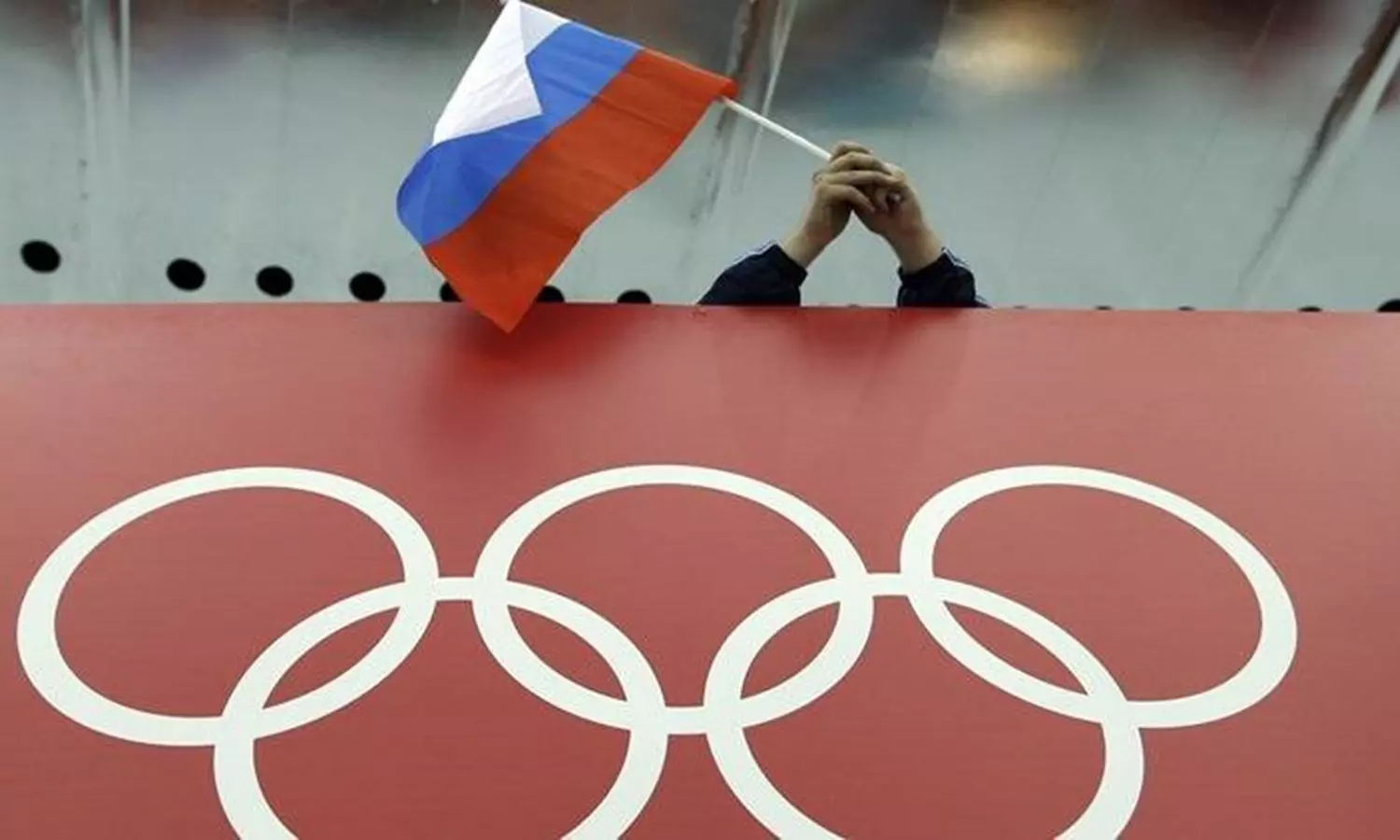Others
War and Peace: How the world of sports erred in its response to Russia
Russian athletes have become collateral damage in the war on Ukraine. But this is not unexpected, the world of sports has been regressing from Nelson Mandela's era to George Orwell's for a while now.

Russian and Belarusian athletes have been frozen out of the European pathway to the Paris Olympics. Asia is thus stepping in. (File Photo/Getty)
In his essay 'Sporting Spirit' in The Tribune in 1945, George Orwell famously said sports 'is war minus shooting' and that any international-level sport is an imitation of warfare between two countries.
In the wake of Russia's attack on Ukraine, the International Olympic Committee (IOC) and many other international sports federations banned the participation of Russian and Belarusian athletes and officials. Under geopolitical pressure, many Russian athletes find international events blocked to them till further notice. The present scenario seems to justify the Orwellian view that in the time of actual war there is no room to 'mimic war' - or for sports.
Orwell's assessment was made in the immediate aftermath of the Second World War, with the Cold War on the horizon and at a time when memories of the Nazi mobilization of the Berlin Games of 1936 were still vivid. This was a time when sports diplomacy was hanging between the European and Soviet bloc. The post-war era saw the confrontation between capitalism and communism in the sports arena.
The cultural identity of sports is inextricably linked with larger economic, political and social structures. It has long been used as means of fostering nationalism and patriotism.
There are more than some similarities between sports and war. Discipline, comradeship among troops, physical strength, teamwork, identity assertion are the terms that emerge from both and fuel national pride and sometimes ethnocentricity. This space is sometimes used as a manifestation of jingoism and hypermasculinity - and sometimes even justify military actions.
Historians can vouch that nationalism and the emergence of sports as a practice became intertwined from the time of the Napoleonic wars. Sports became not only a way of preparing young male bodies and minds for combat but also a form of cultural defence in the assertion of political identity. The long-standing association of sport, Army and Empire was considered a holy trio. It is no coincidence that the century of Nationalism, the 19th century, became both the century of mass education as well as the codification of sporting practices.
Sports as a tool for peace
However, this analogy of war and sports overlooks another connection - that of peace. One may find numerous examples of sports being used as a tool of truce, friendship and camaraderie.
Like the football matches played by the soldiers on the Western Front during the spontaneous truce of 1914 Christmas. During World War, soldiers fighting against each other came together and converted the war zone into a playing zone. Similarly, the symbolic triumph of post-apartheid South Africa's Rainbow Nation at the 1995 Rugby World Cup was the moment that ushered a bridge in the racial gap among South Africans. Nelson Mandela, the former President was the key to breaking away from the past, which had haunted blacks for the many years of Apartheid.
In Colombia, football successfully constructed a more inclusive national narrative in fostering peace between the government and the left-wing FARC forces. It became a tool to reintegrate FARC supporters into Colombian society, uniting former enemies through both spectatorship and sporting encounters on the pitch, thus ultimately helping to end the armed conflict.
That sports do not fall under the aegis of governments or nation-states but various national and international NGOs instead also helps to mobilise sports in post-conflict situations, humanitarian crises and social development projects. The United Nations and other developmental agencies, however, hardly acknowledge sports as a tool to bridge the gap in hostile or post-war situations.
'One less conversation'
Most sports media coverage is on the back of a narrative that continues to privilege its relationship with martial culture, hypermasculinity and jingoism. 'Arch-rivalry' is the language that sells. A cricket match between the Indian and Pakistani male teams reduces sports to the logic of jingoism, TRP and hatred. This does not leave much space for much other expressions. Hence, a friendly gesture by Virat Kohli to the Pakistani players was downplayed, as it broke the norm.
Similarly, the friendship between Neeraj Chopra and Arshad Nadeem, two javelin throwers from the 'arch-rival' nations, not only debunked this jingoism but also showed the potential to send a strong message that sports can be a tool to create friendship.
Banning sports teams and individuals only means one less conversation. And one less conversation means creating a vacuum where trust deficit, rumours and hatred grow.
There is already a huge global response against the war. The present scenario should be used to declutter sports from the Orwellian understanding and move more towards a more Mandelian understanding - for the arena of sports to be used to create rainbow globalism.
(The writer is a doctoral scholar at the Department of History, Delhi University)
